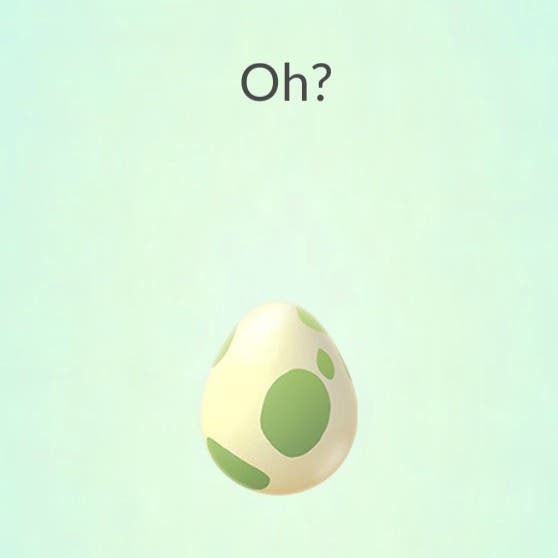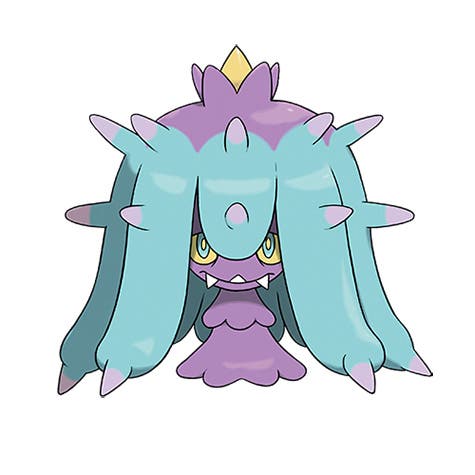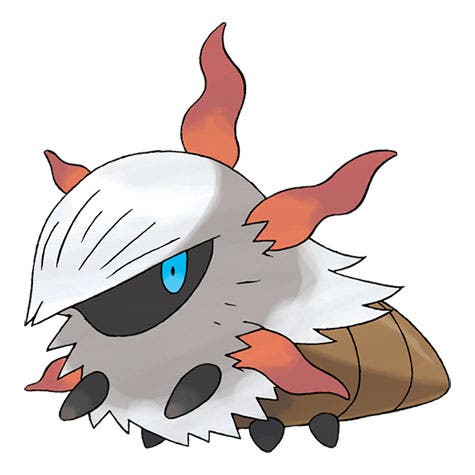Pokémon Go Egg charts: What's in 2km, 5km, 7km, 10km and 'Strange' red 12km Eggs
What you can find in Eggs of all distances in Pokémon Go.
Pokémon Eggs date back to the second generation of the main series, and in Pokémon Go, they also have a very important role to play.
Unlike the main games, there's no breeding mechanic this time. Pokémon Eggs are found at random from PokéStops - or in the case of 7km Eggs, Gifts, and 12km Eggs, from Rocket Leaders - until you reach a maximum of 9 in your bag.
Most importantly, there's no way of telling which Pokémon's inside the Egg itself in Pokémon Go, aside from, that is, narrowing it down to the four large Egg groups for 2km, 5km, 7km, 10km and 12km Eggs below.
On this page:
- Pokémon Go 2km Egg Chart
- Pokémon Go 5km Egg Chart
- Pokémon Go 7km Egg Chart
- Pokémon Go 10km Egg Chart
- Pokémon Go Red 'Strange' 12km Egg Chart
- Pokémon Go Egg hatching, and chances of hatching a specific Pokémon, explained
- What else you need to know about hatching 2km, 5km, 7km, 10km and 12km Eggs in Pokémon Go
Pokémon Go 2km Egg Chart
The Pokémon available from 2km eggs changed on Friday 1st December at the start of the Season of Timeless Travels in Pokémon Go. You can also now view which Pokémon can hatch from 2km eggs, including their rarity levels, simply by tapping the egg.
New Pokémon are occasionally added to the 2km egg pool during an in-game event in Pokémon Go. When this occurs certain Pokémon in the standard 2km egg pool may switch tiers, so that it's easier for players to hatch certain event related Pokémon. Once the event ends, the 2km egg pool, including the rarity tiers, return to normal.

You can find all the confirmed non-event 2km Egg hatches below:
Tier 1
- Pichu (Gen 2)
- Igglybuff (Gen 2)
- Togepi (Gen 2)
- Tyrogue (Gen 2)
- Fomantis (Gen 7)
- Lechonk (Gen 9)
- Smoliv (Gen 9)
Tier 2
- Smoochum (Gen 2)
Tier 5
- Larvesta (Gen 5)
Pokémon Go 5km Egg Chart
On Friday 1st December, the pool for the 5km Eggs changed to coincide with the start of the Season of Timeless Travels in Pokémon Go. Tapping any 5km egg you own will now allow you to see which Pokémon can hatch from it, including the rarity levels for each one.
It's important to note that, during in-game events, 5km eggs have the chance of containing a Pokémon connected to that specific event and this will change the tiering of Pokémon which are not involved in the event. Mareanie, for example, is a Tier 1 Pokémon for non-event 5km eggs, but, in the 5km eggs collected during an event, could be moved to Tier 4. This allows the event specific Pokémon to fill Tier One and Tier Three, making it easier for you to hatch these Pokémon.
Here are the Pokémon, along with their associated tiers, which can be hatched from 5km eggs:

Tier 1 Rarity:
- Lickitung (Gen 1)
- Mareanie (Gen 7)
- Pawmi (Gen 9)
Tier 2 Rarity:
- Elekid (Gen 2)
- Magby (Gen 2)
- Sprigatito (Gen 9)
- Fuecoco (Gen 9)
- Quaxly (Gen 9)
Tier 5 Rarity:
- Larvesta (Gen 5)
Pokémon Go 7km Egg Chart
The contents of 7km eggs will often change if there is an in-game event running in Pokémon Go, before reverting back to the following.
Outside of events, the 7km egg pool changed on Friday 1st December at the start of the Season of Timeless Travels. It now contains a mixture of Alolan, Galarian and Hisuian Pokémon.
It's now possible to view which Pokémon can hatch, including the rarity level for each one, from 7km eggs collected on or after Thursday, 8th April 2020.
Here are the Pokémon currently in the 7km egg pool:

Tier 1 Rarity:
- Galarian Meowth
- Galarian Stunfisk
- Alolan Geodude
Tier 2 Rarity:
- Alolan Sandshrew
- Alolan Meowth
- Galarian Farfetch'd
- Galarian Ponyta
Tier 3 Rarity:
- Alolan Vulpix
- Galarian Slowpoke
- Paldean Wooper
Tier 4 Rarity:
- Galarian Zigzagoon
- Alolan Grimer
Tier 5 Rarity:
- Galarian Darumaka
7km eggs have had the most varied history of all Egg pools. Previously, they focused on Baby Pokémon and Alolan Pokémon, as well as being briefly dedicated to fossil types.
Pokémon Go 10km Egg Chart
Below you can find all the Pokémon that can be hatched from 10km eggs from Friday 1st December when the Season of Timeless Travels began. By tapping on an 10km egg in your Pokémon Storage, you'll be able to view which Pokémon hatch from it, along with their rarity levels.
Below you can find the Pokémon currently in the 10km egg pool:

Tier 1 Rarity:
- Dratini (Gen 1)
- Beldum (Gen 3)
- Tyrunt (Gen 6)
- Amaura (Gen 6)
- Carbink (Gen 6)
- Goomy (Gen 6)
Tier 3 Rarity:
- Jangmo-o (Gen 7)
Tier 4 Rarity:
- Frigibax
Tier 5 Rarity:
- Larvesta (Gen 5)
Pokémon Go Red 'Strange' 12km Egg Chart
12km eggs - also known as 'Strange' or red Eggs - were first made available in October 2020 as part of a Team Go Rocket event. The Strange Egg pool was last updated on Wednesday, 21st June 2023.
To get a red 'strange' egg, you must defeat a Leader in battle, and have an open space in your egg inventory.
Like with all the other types of eggs, you can view which Pokémon, along with the rarity level for each one, hatches from your 12km eggs by tapping on them in the Egg section of your Pokémon storage.
The current Strange Egg pool contains:

Tier 1 Rarity:
- Sandile (Gen 5)
- Pawniard (Gen 5)
- Vullaby (Gen 5)
- Pancham (Gen 6)
Tier 2 Rarity:
- Larvitar (Gen 2)
- Scraggy (Gen 5)
- Salandit (Gen 7)
Tier 3 Rarity:
- Deino (Gen 5)
Tier 5 Rarity:
- Absol (Gen 3)
- Skorupi (Gen 4)
- Skrelp (Gen 6)
- Inkay (Gen 6)
Thank you to woodersj from reddit for the help with this information!
The Season of Timeless Travels has arrived in Pokémon Go! The Along the Routes event is here, bringing Gift Exchange and the A Route to New Friendships quest with it. During it, take the time to try out Routes and Party Play while you're hunting down rare Pokémon, fighting in the Go Battle League or competing in PokéStop Showcases.
Pokémon Go Egg hatching, and chances of hatching a specific Pokémon, explained

On the surface, Eggs in Pokémon Go appear to simply be another way of randomly acquiring new Pokémon - but just like the mighty Magikarp, we shouldn't judge Eggs by their seemingly ineffectual appearances.
Eggs and hatching can still be an extremely useful tool for expanding your collection - or indeed powering up the Pokémon you already have.
Aside from the Egg charts above, there is no way from the outset of knowing what might be inside the Egg. Additionally, the odds of catching each respective Pokémon are hidden from the player - something which the community has been asking for the game to disclose.
With this in mind, know that the chances of catching each individual Pokémon within a pool is not the same as the rest - and they should be treated as blind loot boxes you see in other live service games.
What else you need to know about hatching 2km, 5km, 7km, 10km and 12km Eggs in Pokémon Go
Finally, there are a few other general - but still important - tips to bear in mind when hatching Eggs in Pokémon Go:
- You can only hold a maximum of 9 Eggs at a time, including the Eggs you have in Incubators.
- If you hit the maximum of 9 Eggs, you'll watch to hatch some to pick up others, whether it's 7km Eggs from Gifts or 2km, 5km and 10km Eggs from PokéStops.

- Incubators purchased with PokéCoins are disposable, with only three uses each. To get the very most out of them, hatch your 10km and 12km Eggs in the disposable Incubators, whilst your free, infinite-use Incubator quickly churns out 2km and 5km Eggs in a higher volume.
- Only the first evolution of each chain is available from an Egg - for example Bulbasaur can be hatched from an Egg, but not Ivysaur or Venusaur.
- That rule is the same for the baby Pokémon Togepi, Pichu, Smoochum and so on, as they were seemingly counted as pre-evolutions at first and included alongside their evolved forms - for example, Elekid with Electabuzz - in their respective egg groups.
- Pokémon Eggs are likely to be the quickest way to power up starter Pokémon - Bulbasaur, Charmander, Squirtle, and the like - unless you're fortunate enough to have found a particularly good spot to find them in the wild. The fact they can be found in the relatively common, quick-to-hatch Eggs makes all the difference.
- The Pokémon Go app does not need to be open to progress your Egg walking distance, provided you have Adventure Sync enabled.
- Travelling in cars, trains, and other fast-moving vehicles won't count towards your distance travelled, as the game knows when you're moving too fast to be walking.
- Often the app will display your character as moving slightly, even though you and your phone may be staying perfectly still. This can, in fact, be used to help tick away at your Egg hatching - plug your phone into a charger, leave it open, and the game should do some of the work for you simply through the quirks of its GPS.
- The CP of Pokémon hatched from Eggs are tied trainer level at the time you acquired the Egg - not at the time the Egg hatches.
- The various region exclusive Pokémon are unable to be found through either Egg hatching or encountering in the wild outside of those regions.
- If you're a completionist, then hatching Eggs is a requirement for some of Pokémon Go's Medals, which might be an added incentive if you're not particularly interested in Candy or Stardust.

















